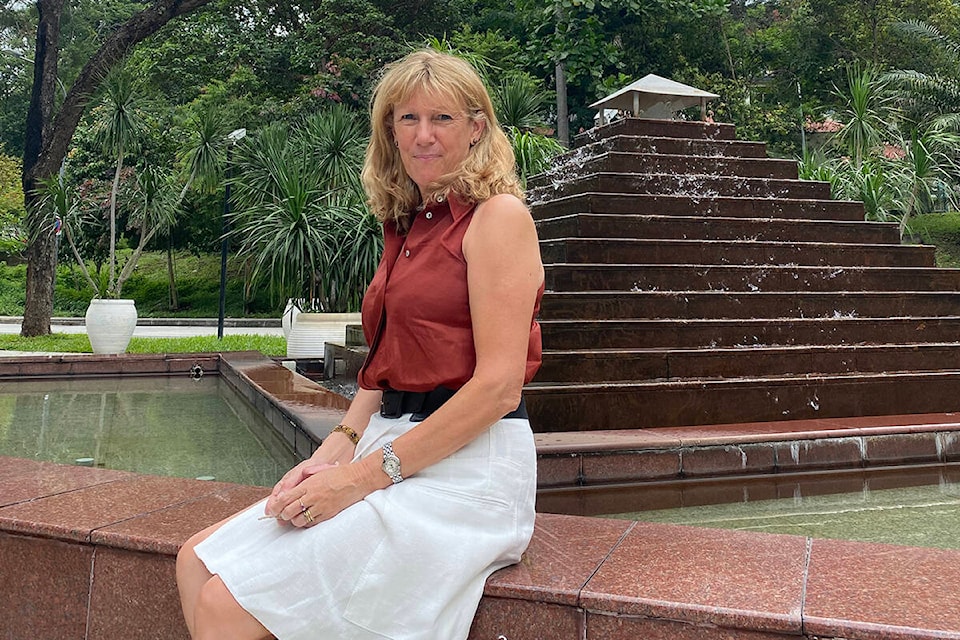Hi Anne, do you have any advice or suggestions on activities I can do with my toddler to prepare her for school? There are so many books and educational toys available that I find it very confusing. I don’t want to spend my free time with her sitting at a table with a workbook when she is keen to play with me.
Hi, you are not alone in being confused by all the material being displayed in so many outlets.
I hope I can cut through some of the marketing and make your free time more enjoyable for both of you.
The key skills a child needs to develop so that they are ready to learn are memory, motor skills and concentration. So play away!
There are three ways we use memory – visual, auditory and kinaesthetic. We have short and long term memory. Visual memory is remembering the things we see, auditory – the things we hear and kinaesthetic memory is remembering the things we do. Everyone will have these three forms but often one type will be better than another.
I know my kinaesthetic memory is my strongest, followed by visual and my auditory is not great! In some children it may be obvious which is stronger but not always.
Children with dyslexia may have great kinaesthetic memory but weaker visual memory. So how do we help develop these areas of memory through play?
Let’s take visual memory first. Some of these activities you are probably already doing without realising the value of them. Matching: this can be using a card game or as simple as matching socks when doing laundry.
Matching colours – how many blue mugs and how many green? Sequencing – take some pasta shapes and make a train – one spiral, one bow, one shell and continue together until your child can continue alone.
Place things in size order – you can use any toys for this. “Visual memory game” is always fun. Place a number of small items on a tray and talk about each one describing its features, then cover it with a cloth and remove one item – can your child name the missing item? Your turn! Remember to vocalise your thinking!
Auditory memory is necessary to follow instructions, recall messages and names. Singing, nursery rhymes and “Simon says” type games are great for auditory memory. You can play the shopping game as a family – each person adds another item to the shopping list and each player has to remember the whole list before adding their next chosen item – its good to add silly items to the list such as “I’m going to buy apples, eggs, ham, a ski, a pair of socks, a ticket to the moon…..
If you find that your child finds it hard to remember instructions for example - if you ask her to go to her room for something and she can’t remember what you asked, be patient and help her to remember. Next time, ask her to repeat back to you what she has been asked to get as this uses two forms of memory – both auditory and kinaesthetic – and she is more likely to recall what you asked.
Kinaesthetic memory is remembering things you have physically done or said.
It is often a strong form of memory and can be used to support other forms of memory. Writing things down or making a list uses this form of memory.
Games where actions are used are good for developing kinaesthetic memory so again “Simon Says”; clapping when singing; “Head, shoulders, knees and toes”.
Drawing pictures of things that you want to remember will also help to secure those memories.
At the end of the day make time to sit together and talk through the events of the day in sequence as this will help to transfer the memories into long term memories and supports the memory processing skills.
Developing motor skills is important so your child is ready to write and play sports.
“Fine” motor skills and “gross” motor skills are the two main areas to think about.
To help with “fine” motor skills spend some time playing with tiny toys and items. You can use tweezers to try to pick up rice or dried beans. Make tiny balls with playdough and make little bowls of fruit. Use scissors to cut paper into shapes.
Begin to draw circles between two lines and gradually make the lines closer together so the circles have to become smaller.
Draw zigzag shapes between two lines in the same way. Lace shoes, fasten buttons, fasten zips, pop bubble-wrap.
“Gross” motor skills are those needed for sports. Developing good “eye to hand” coordination takes practice, so throwing different size balls is a good start. Combine other memory skills by throwing a large soft die to each other and catch it, note the number, remember the number and throw again, now add the new number to the one before and continue.
All bat and ball games are good practice. Riding a bike, skiing, balance games, yoga are all great ways of developing gross motor skills.
Remember that vocalising your activities is still the most important way you can help your child.
Vocabulary development, the underlying sense of security a child feels when engaged with and the strengthening of your relationship with your child is the real reward that comes from play.
Send your questions to annemrevell@gmail.com.
Anne Revell is a special education, behaviour and parenting consultant who is a part-time Revelstoke resident.
